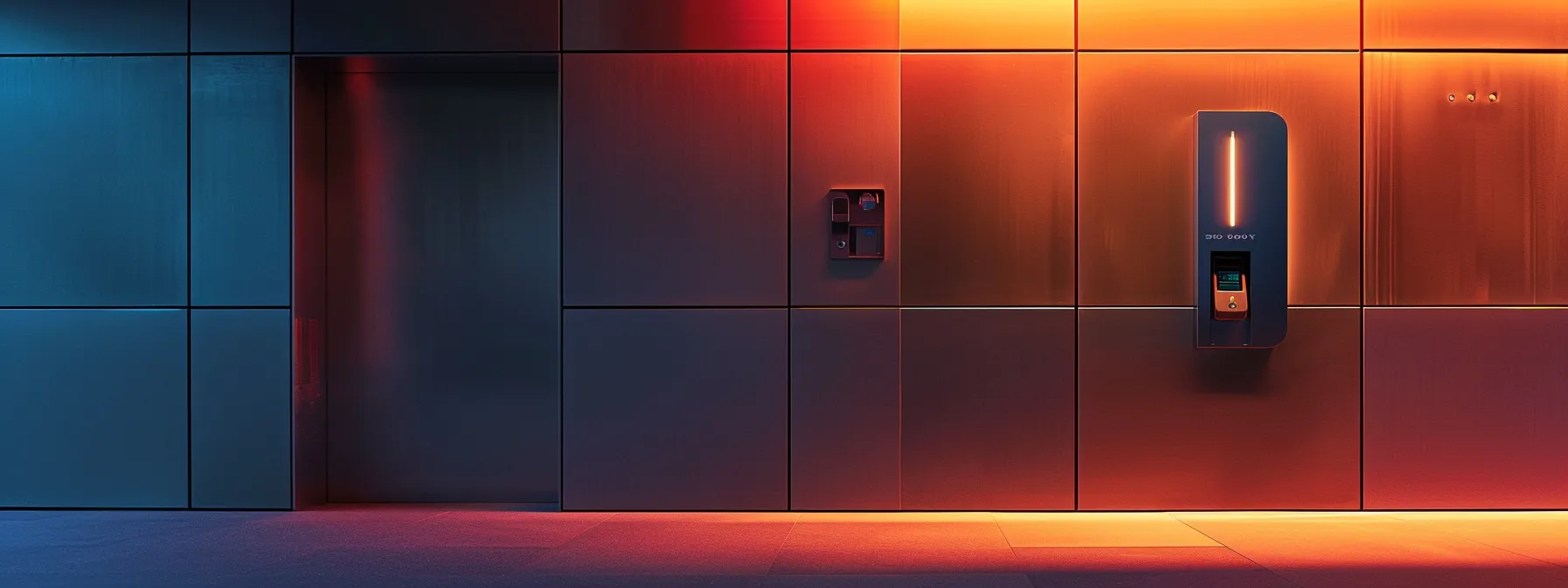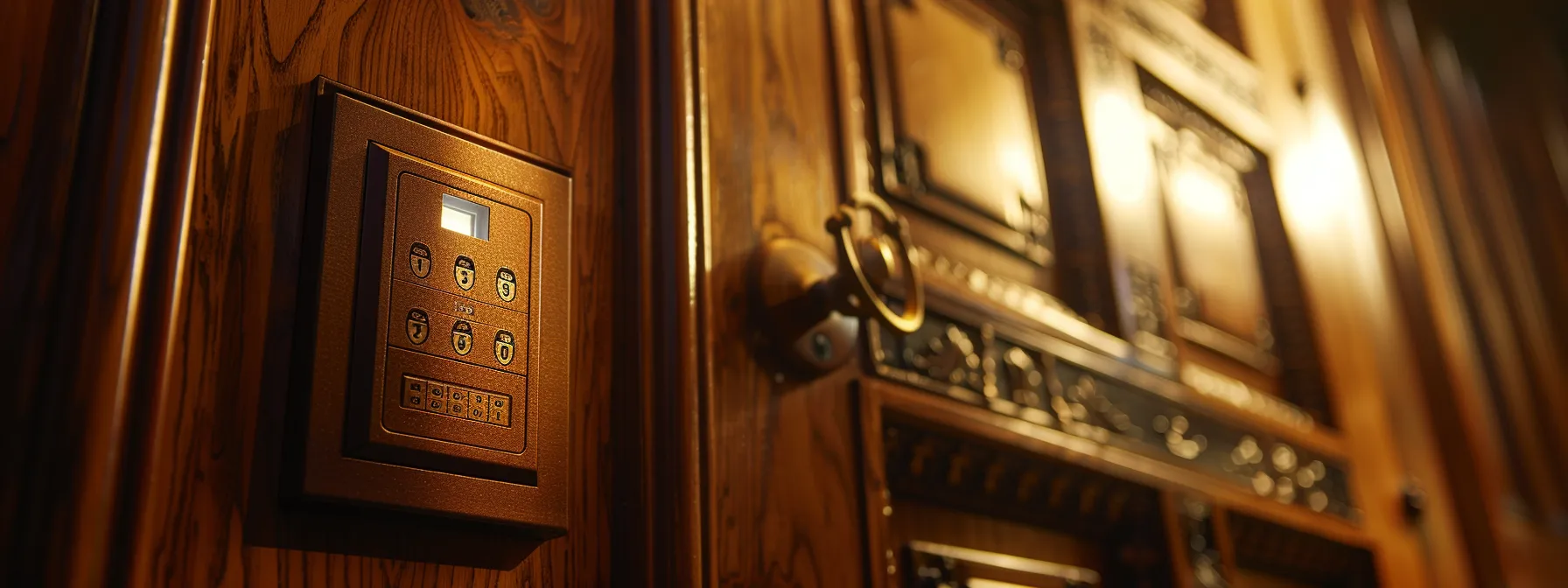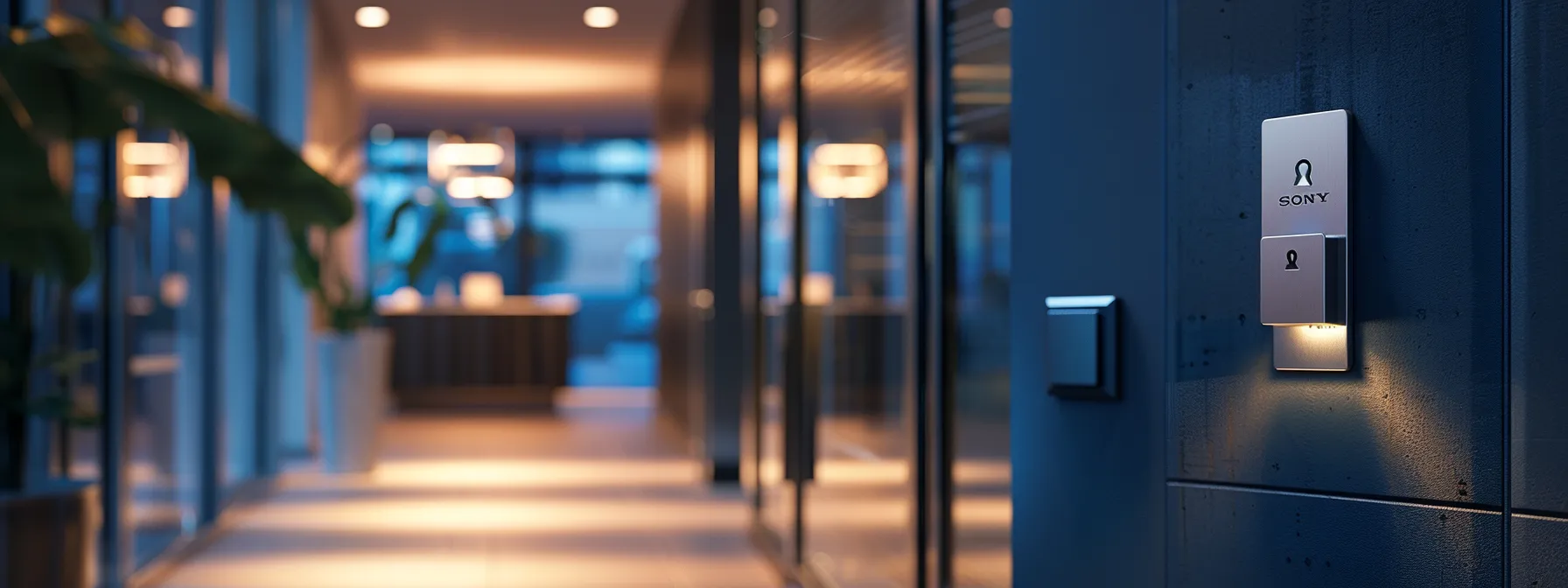Are you struggling to choose between keycard entry systems and traditional access control methods for your organization? This comprehensive comparison explores the key differences in security features, cost implications, and user experience between these two approaches. By the end of this article, you’ll understand which solution best fits your organization’s needs, helping you make an informed decision to enhance your facility’s security and streamline access management.
What Are Keycard Entry Systems for Organizations?

Keycard entry systems are advanced access control solutions for organizations, utilizing digital credentials to manage pedestrian access. These systems comprise key components like card readers, access control software, and intercom integration. Organizations implement keycard systems to enhance security, streamline operations, and ensure fire safety compliance. Understanding keycard technology is crucial for effective implementation in various organizational settings.
Understanding Keycard Technology
Keycard technology revolutionizes access control through wireless, high-frequency systems. These environmentally friendly solutions utilize security tokens embedded in cards or fobs, which communicate with keycard locks to grant or deny entry. Organizations benefit from the flexibility and security of these systems, as they can easily manage and update access permissions through centralized software.
| Feature | Benefit |
|---|---|
| Wireless technology | Easy installation and maintenance |
| High-frequency communication | Rapid and secure access verification |
| Security tokens | Enhanced protection against unauthorized entry |
| Centralized management | Efficient control and monitoring of access points |
Key Components of Keycard Systems
Keycard entry systems comprise essential components that work together to provide secure access control. The system’s core includes a sensor that detects the presence of a keycard or badge, often utilizing a magnetic field to read the encoded information. These cards or keychains contain unique identifiers, allowing the system to grant or deny access based on predetermined permissions. The sensor communicates with a central control unit, which manages access rules and logs entry attempts, providing organizations with comprehensive security management capabilities.
How Organizations Implement Keycard Systems
Organizations implement keycard systems by integrating radio frequency technology with access control software. This process involves installing card readers at entry points, configuring the system to recognize authorized credentials, and setting up a centralized management platform. Advanced implementations may incorporate fingerprint authentication or mobile device access, adding layers of security to mitigate risks. The system communicates via encrypted signals, ensuring secure transmission of access data and maintaining the integrity of the organization’s entry points.
Exploring Traditional Access Control Methods

Traditional access control methods encompass physical keys, combination locks, and security personnel. These systems, while lacking the advanced features of keycard entry, still play a role in organizational security. This section examines the strengths and limitations of these methods, including their effectiveness in emergencies and potential integration with home automation. Understanding these approaches provides context for evaluating modern keycard systems with proximity cards and mutual authentication.
Overview of Physical Keys and Locks
Physical keys and locks have long been the foundation of traditional access control methods, offering a straightforward approach to safety and security. While these systems lack the advanced features of key card access and integration with the Internet of Things, they remain reliable for many organizations. However, physical keys present challenges in user experience and customer service, as lost or stolen keys require immediate lock changes, potentially disrupting operations and increasing costs.
Evaluating Combination Lock Systems
Combination lock systems offer a keyless entry solution for commercial properties, eliminating the need for physical keys. These systems use a magnet-based mechanism and require users to input a specific code sequence to gain access. While they reduce key turnover issues, combination locks lack the advanced features of smart key technology. Organizations must weigh the simplicity of combination locks against the enhanced security and customer convenience provided by modern keycard systems.
The Role of Security Personnel in Traditional Access Control
Security personnel play a crucial role in traditional access control, offering a human element that key card systems often replace. These professionals monitor entry points, verify credentials, and respond to security breaches, providing a level of flexibility and situational awareness that automated systems lack. However, the effectiveness of security personnel can be enhanced by integrating them with modern access control technologies. This combination leverages the strengths of both approaches, using key card systems to manage frequency-based entry while security staff oversee vulnerable areas, adjust lighting, and monitor antenna-based communications for a comprehensive security solution:
- Credential verification and visitor management
- Real-time threat assessment and response
- Integration with electronic access control systems
- Monitoring of surveillance equipment and alarms
- Customized security protocols for different areas or events
Comparing Security Features of Keycard and Traditional Systems

This section compares the security features of keycard and traditional access control systems. It analyzes access control security levels, assesses vulnerabilities in each system, and explores recent developments in security technologies. From biometrics to electronic locks, the comparison covers various aspects of door security, contrasting modern card key access with traditional lock and key methods. This analysis helps organizations understand the strengths and weaknesses of each approach to access control.
Analyzing Access Control Security Levels
Access control security levels vary significantly between keycard and traditional systems. Smart card technology offers enhanced protection against theft and unauthorized access, providing an audit trail for all entry attempts. Keycard systems utilizing ultra high frequency technology enable rapid, secure authentication, while traditional methods lack this scalability. Organizations can implement multi-factor authentication with keycard systems, combining physical cards with biometrics or PINs for heightened security:
- Basic: Single-factor authentication (card only)
- Intermediate: Two-factor authentication (card + PIN)
- Advanced: Multi-factor authentication (card + biometrics + PIN)
- Elite: Adaptive security with AI-driven risk assessment
Assessing Vulnerabilities in Each System
Keycard and traditional access control systems each present unique vulnerabilities. Traditional methods, such as physical keys and keypads, are susceptible to theft, duplication, and code sharing, potentially compromising asset security. Keycard systems, while more secure, may face vulnerabilities in their onboarding processes or energy-dependent components. Organizations must consider these weaknesses when implementing access control for various assets, including vehicles, to ensure comprehensive protection against unauthorized entry.
Recent Developments in Security Technologies
Recent advancements in security technologies have revolutionized physical security and access control systems. Modern credentials now incorporate mobile app functionality, allowing users to access gates and doors using their smartphones. This shift enhances convenience while maintaining robust security measures. Additionally, some systems now integrate with vehicle license recognition technology, providing seamless entry for authorized vehicles without compromising overall security protocols.
Cost Analysis of Keycard Entry Systems vs Traditional Methods

This analysis examines the financial aspects of implementing keycard entry systems versus traditional access control methods. It explores initial setup costs, ongoing maintenance expenses, and long-term savings from enhanced security. The comparison highlights how modern security systems impact operational efficiency, considering factors like personal identification numbers and database management. This evaluation helps organizations make informed decisions about their access control investments.
Initial Setup Costs of Keycard Systems
The initial setup costs of keycard systems vary based on system complexity and accessibility requirements. Organizations must consider expenses for smart lock hardware, user credential issuance, and surveillance integration. While keycard systems generally have higher upfront costs than traditional methods, they offer enhanced security features and long-term operational benefits. A breakdown of typical initial costs for a mid-sized organization implementing a keycard system includes:
| Component | Estimated Cost |
|---|---|
| Smart lock hardware (per door) | $300 – $800 |
| Access control software | $1,500 – $5,000 |
| Card readers (per unit) | $150 – $500 |
| Keycard issuance system | $1,000 – $3,000 |
| Installation and configuration | $2,000 – $10,000 |
Ongoing Maintenance Expenses
Ongoing maintenance expenses for keycard entry systems generally prove lower than traditional access control methods. Organizations benefit from reduced costs associated with key replacement, lock rekeying, and physical security personnel. Keycard systems’ infrastructure offers enhanced convenience and security through encryption and regular software updates. However, organizations must factor in periodic card replacements, system upgrades, and potential technical support costs:
| Expense Type | Keycard System | Traditional Method |
|---|---|---|
| Key/Card Replacement | Low (digital reissue) | High (physical replacement) |
| Lock Maintenance | Moderate (electronic) | High (mechanical wear) |
| Security Personnel | Reduced need | Ongoing requirement |
| Software Updates | Regular (included) | Not applicable |
Long-Term Savings From Enhanced Security
Organizations implementing keycard entry systems experience significant long-term savings through enhanced security measures. The advanced interface of card readers utilizing the Wiegand effect provides superior protection for property and assets, reducing incidents of theft and unauthorized access. These systems offer substantial return on investment over time, as demonstrated by the following cost-benefit analysis:
| Benefit | Annual Savings |
|---|---|
| Reduced security personnel | $50,000 – $100,000 |
| Decreased insurance premiums | $10,000 – $30,000 |
| Prevented theft and property damage | $25,000 – $75,000 |
| Improved operational efficiency | $15,000 – $40,000 |
User Experience With Keycard Systems and Traditional Methods

This section examines the user experience of keycard systems and traditional access control methods. It explores employee convenience, user training requirements, and organizational feedback on system effectiveness. The comparison highlights how different access control approaches impact daily operations and user satisfaction, providing insights for organizations considering security system upgrades.
Convenience in Access for Employees
Keycard systems offer superior convenience for employees compared to traditional access methods. Users can quickly enter secured areas with a simple tap or swipe, eliminating the need to fumble with keys or remember complex codes. This streamlined process reduces entry time and frustration, particularly during peak hours or in high-traffic areas. Additionally, keycard systems allow for customized access levels, enabling organizations to grant specific permissions to different employee groups without the need for multiple physical keys.
User Training and Adaptability
User training for keycard systems typically requires less time and effort compared to traditional access control methods. Organizations find that employees quickly adapt to using keycards, with minimal instruction needed on proper card presentation and handling. The intuitive nature of tapping or swiping a card aligns well with users’ existing experiences with similar technologies, such as contactless payment systems. This ease of adoption translates to reduced training costs and faster implementation of new security protocols:
- Brief orientation sessions suffice for most users
- Visual aids and quick-reference guides support self-learning
- Automated onboarding processes streamline user setup
- Regular system updates require minimal additional training
- Cross-platform compatibility enhances user adaptability
Feedback From Organizations on System Effectiveness
Organizations consistently report higher satisfaction and improved security outcomes with keycard entry systems compared to traditional methods. Facility managers praise the enhanced control and flexibility offered by digital access management, noting significant reductions in unauthorized entry incidents. Human resources departments highlight the streamlined onboarding process for new employees, while IT teams appreciate the integration capabilities with existing security infrastructures. Overall, businesses cite improved operational efficiency and a stronger security posture as key benefits of implementing keycard systems.
Future Trends in Access Control

The future of access control is evolving rapidly, with innovations in keycard technology leading the way. Organizations are increasingly adopting integrated security solutions that combine traditional methods with smart technology. This shift is reshaping how businesses manage access, promising enhanced security and efficiency. The following sections explore these trends and their potential impact on organizational access control systems.
Innovations in Keycard Technology
Recent innovations in keycard technology have introduced advanced features that enhance security and user experience. Biometric integration now allows organizations to combine fingerprint or facial recognition with traditional keycard systems, providing multi-factor authentication. Near-field communication (NFC) enables seamless access through mobile devices, eliminating the need for physical cards. These advancements offer organizations improved security, greater flexibility, and reduced operational costs associated with managing physical credentials.
The Shift Towards Integrated Security Solutions
Organizations are increasingly adopting integrated security solutions that combine keycard systems with other advanced technologies. These comprehensive platforms merge access control, video surveillance, and alarm systems into a unified interface, enhancing overall security management. By integrating keycard data with AI-powered analytics, businesses can identify patterns, predict potential security risks, and respond proactively to threats. This shift towards holistic security ecosystems allows for more efficient operations, improved compliance tracking, and enhanced protection of assets and personnel.
Potential Impact of Smart Technology on Access Control Systems
Smart technology is poised to revolutionize access control systems, offering unprecedented levels of security and convenience. Internet of Things (IoT) devices will enable seamless integration of keycard systems with building automation, optimizing energy usage and enhancing occupant comfort. Machine learning algorithms will analyze access patterns to detect anomalies and potential security breaches, providing proactive threat mitigation. As organizations adopt these smart technologies, they will experience improved operational efficiency, reduced costs, and enhanced security postures.
Conclusion
Keycard entry systems offer organizations superior security, convenience, and operational efficiency compared to traditional access control methods. These advanced systems provide enhanced protection against unauthorized access, streamline user experiences, and enable comprehensive monitoring and management of entry points. While initial setup costs may be higher, keycard systems deliver long-term savings through reduced maintenance expenses, improved security outcomes, and increased operational efficiency. As technology continues to evolve, organizations that adopt keycard entry systems position themselves at the forefront of access control innovation, ensuring robust security measures that adapt to future challenges and opportunities.




